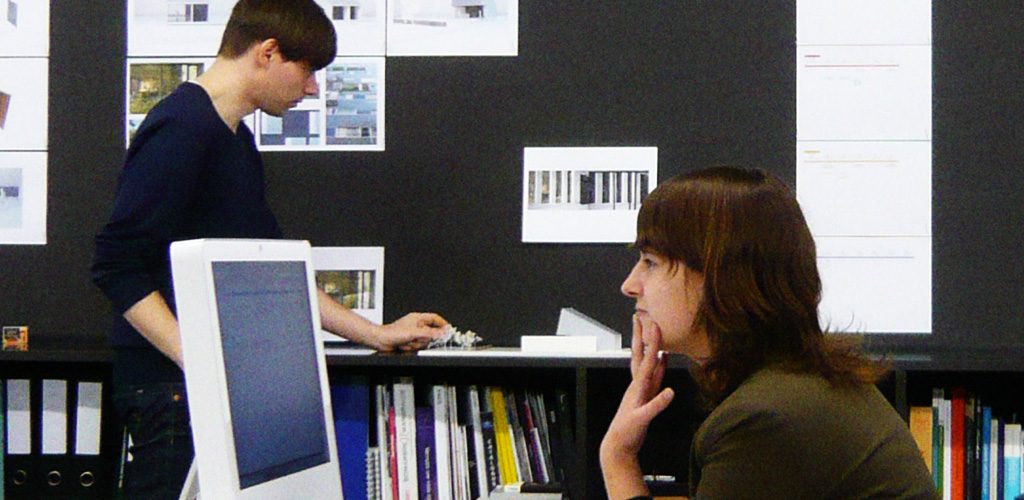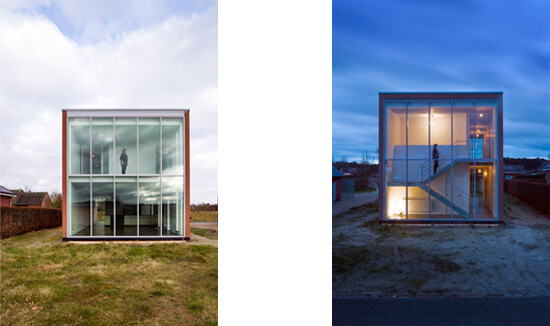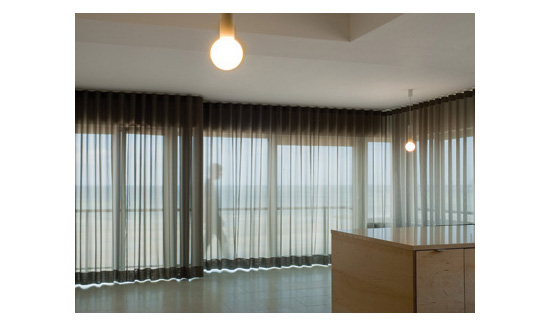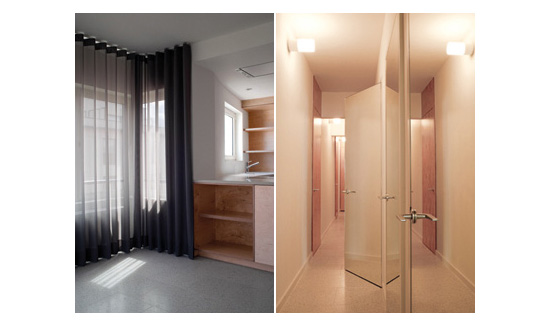Bruno Despierre and Kelly Hendriks met each other while studying at Sint-Lucas Ghent. After working at offices like Conix Architects, Dirk De Leeuw, 51N4E, OMA NY and Christian Kieckens Architects, B-ILD was founded in 2009. Their office is based in the centre of Brussels, Belgium.
B-ILD refers to the phonetical resemblance between (das) Bild and (to) build. It emphasises the ambition to generate images that capture the essence of the element to be built. B-ILD focuses on architecture and interior architecture.
Their projects are quite diverse. From the bar of advertising agency Famous to the shop of Le Fabuleux Marcel de Bruxelles to private homes and interior architecture.
What is the speciality of your office?
The commissions that we accept are very diverse. One thing that is constant however is the scale of our projects. We tend to work on a scale that is intelligible and limited.
The projects always relate strongly to the client. For each specific situation, we try to form a creative and particular response. We strive to create a place where you can disengage from your surroundings. Most projects are therefore essentially introspective in its organisation.
What is your opinion/vision on current architecture in Belgium?
Lately, there are several younger offices that elevate their practice above the generally accepted interpretation of architecture as “craft of building”. They base their work on a theoretical discourse or create their own scenarios to grasp reality. We think this new guard looks very promising.
Do you discuss your projects with other architects or designers of a different discipline?
We never work alone. Other architects and designers constantly influence us, we also work in close collaboration with photographers and graphic designers. For every project, we try to match a photographer who will show his/her own view on the project.
Minimalists or free form?
We tend to see the current minimalists approach as “over-defined” and free-form as “under defined”. We like to give meaning again to architectural elements and materials. Lots of architectural projects are flattened and hollow, we would like to counter that by creating a space that intensifies an experience. All projects tend to have a different outcome, what is constant is our working method.
Is there a big difference between the education of architecture and real-life practice?
During our education, we focus mostly on the design process. In real-life practice, this tends to be only a small part of the building process. While many are opposed to this concept of education, I think that it is necessary to fully develop your design skills before starting your working career. All the practical aspects you can learn while doing.
What is, in your opinion the most overrated architectural building in Belgium?
Although I adore the structure of the building, the Atomium must be the most overrated building in Belgium.
Is there a big difference between European, Asian and American perspective on architecture?
I think the biggest difference can be found between European and Asian architecture. I find it more difficult to relate to their perspective. I assume this is mainly because of the cultural differences.
Have you ever made a big trip to visit a specific structure?
The most memorable, my trip to the ‘Kazo-no-Oka crematorium’ by Fumihiko Maki in Japan. A Japanese girl drove me all the way out there just to show me the building. Since her car was tiny and comparable to the power of a scooter, it almost took us a whole day to get there. The calm ride made the visit definitely more impressive.




